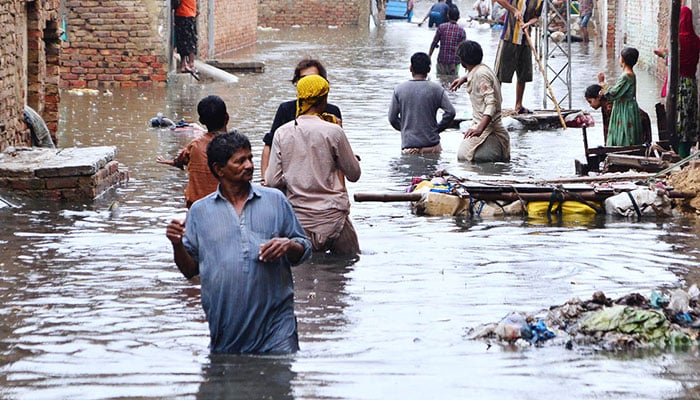A climate change authority
Climate change and global warming are no longer buzzwords. They have emerged as clear indicators of an impending crisis that threatens the very fabric of global societies, economies, and food systems.
The year 2023 stands as a testament to this escalating challenge, having been recorded as the warmest year globally. The Intergovernmental Panel on Climate Change (IPCC) highlights a concerning 1.1-degree Celsius increase in global temperatures from pre-industrial levels, setting us on a path toward a 1.5-degree Celsius rise by 2030 if current trends persist unchecked.
The repercussions of this warming are felt most acutely in the developing world, where agriculture forms the backbone of livelihoods for over 80 per cent of the population. The World Bank warns of a grim future where climate change could plunge an additional 100 million people into the depths of extreme poverty by 2030. Smallholder farmers, in particular, face the brunt of this crisis, with potential yield losses of up to 50 per cent in critical staples crops such as rice and maize.
This dire situation is further compounded by the Food and Agriculture Organization's (FAO) report of a 29 per cent increase in climate-related disasters over the last decade, disproportionately impacting the most vulnerable segments of society in developing countries.
Pakistan serves as a poignant case study of the destructive capabilities of climate change, particularly exemplified by the devastating superfloods of 2022, which impacted over 33 million people. Such calamities are not mere anomalies or isolated incidents but indicators of a systemic shift toward more unpredictable climate patterns, characterized by rising temperatures and the retreat of essential glaciers. The economic toll of these environmental upheavals is staggering, with predictions of an 18-20 per cent reduction in Pakistan's GDP by 2050 due to climate-related challenges. The agricultural sector, a lynchpin of the national economy, faces significant risks, with reduced crop yields, compromised health of livestock, and jeopardized food security.
However, the societal implications extend beyond economic metrics, affecting millions through displacement, loss of livelihoods, and health crises post-climate disasters. The most vulnerable populations, particularly children, confront severe repercussions such as stunted growth and a heightened susceptibility to diseases. Climate change also increases the existing vulnerabilities of girls and women, as was reported after the superfloods of 2022.
In response, Pakistan has demonstrated decent engagement in global dialogues, such as COP27, advocating for the Loss and Damage fund agenda. However, the scale of the crisis demands a more unified and comprehensive strategy, one that integrates national efforts with global cooperation to bolster Pakistan's resilience against rapidly impending challenges.
Although foundational policies such as the National Climate Change Policy Framework 2013, the National Climate Change Policy 2021, and the Pakistan Climate Change Act of 2017 represent beacons of hope, their full potential remains unrealized due to institutional and strategic gaps. The imperative is clear: move beyond ad hoc responses and fragmented governance to embrace a holistic, cross-sectoral approach to climate change.
The nascent National Climate Council and proposed National Climate Authority as well as Climate Change Fund signal a move towards this integrated strategy. However, their success is contingent on clear mandates, sufficient resources, and a departure from siloed governmental operations. The ambiguity surrounding the Climate Change Act's provisions on funding, targets, and responsibilities further complicates the path to effective climate governance.
Explaining the compartmentalized climate governance in Pakistan, Dr Tariq Banuri rightly highlights in one of his papers that as in most countries, what is viewed as the climate agenda is a composite of several different agendas (Water Policy, Energy Policy, Agriculture Policy, Food Security Policy, Health Policy, etc).
The vast majority of these agendas fall decisively within the mandates of other, often far more powerful agencies and ministries than the ministry dedicated to tackling climate change. “Even the residual component is not uncontested. It is clear that the vast majority of the climate-related tasks will and should be carried out by the ministries, associated agencies, and counterpart provincial departments within whose mandates these tasks may fall”, Tariq argues while stressing the need to establish a hub agency at the federal level with a clear mandate to set climate change’s normative agenda, technical agenda, capacity building support, fund mobilization support, and monitoring and evaluation.
I agree with him that a paradigm shift in climate governance is essential. One that encourages inter-sectoral collaboration and weaves together the diverse threads of climate resilience and national development, both at the policy and operational levels. The establishment of the National Climate Authority, intended as a nexus for cross-sectoral coordination, is crucial to this vision.
Much like rethinking climate governance, Pakistan also needs to rethink its climate financing strategies and explore innovative financing avenues. Pakistan's reliance on international pledges (such as the Geneva Pledges after the superfloods in 2022), the pursuit of multilateral climate funds, and domestic financial allocations reflect a multifaceted approach to climate finance.
However, the unpredictability of external pledges, capacity constraints in tapping from existing climate funds, and the diversion of earmarked funds allocated from domestic sources for competing requirements highlight the challenges inherent in these strategies. The proposal by Dr Adil Najam to capitalize on the resilience of flood survivors by monetizing their recovery efforts and the government’s efforts to explore carbon markets, etc, exemplifies some of the innovative financing avenues.
There is no ‘either-or approach’ in climate financing. All of the above-mentioned approaches (and many others) need to be mixed and matched to finance Pakistan’s adaptation and mitigation efforts. This is the context in which the yet-to-be-established Climate Change Fund, proposed under the Climate Change Act of 2017, faces challenges of its mandate, source of funding, and differentiation from existing funds, such as the National Disaster Risk Management Fund and Mountain Area Conservancy Fund, etc. These challenges highlight the need for a clear, autonomous financial strategy to bolster domestic resilience.
Empowering local governments and communities to spearhead grassroots climate actions offers a wellspring of localized, innovative solutions, enhancing adaptive capacities at the community level. Yet, aligning these grassroots efforts with national strategies necessitates a well-thought-out institutional framework, which is currently lacking.
The superior court's recognition of climate change as an existential threat is laudable. Yet, bridging the gap between recognition and actionable measures presents significant hurdles. The interconnection between global climate dynamics and Pakistan's inherent vulnerabilities amplifies the pressing need for a cohesive and comprehensive governance framework.
Such a framework, championed by a functional Pakistan Climate Change Council (the apex decision-making body on climate change in Pakistan), could guide Pakistan towards a sustainable trajectory, embedding climate resilience within the fabric of national development.
This transition, daunting yet indispensable, is imperative not only for preserving Pakistan's environmental legacy but also for ensuring the prosperity and well-being of future generations amidst an increasingly unpredictable climate landscape.
The writer heads the Sustainable Development Policy Institute. He tweets/posts @abidsuleri
-
 Duke's Peace Talks With King Charles, Prince William: 'Ball Is In Harry's Court'
Duke's Peace Talks With King Charles, Prince William: 'Ball Is In Harry's Court' -
 New Research Finds Back Pain May Disrupt Men’s Sleep Quality Later In Life
New Research Finds Back Pain May Disrupt Men’s Sleep Quality Later In Life -
 Jennifer Lopez Still 'very Close' With Ben Affleck's Children, Invites Them To Vegas
Jennifer Lopez Still 'very Close' With Ben Affleck's Children, Invites Them To Vegas -
 Matt Damon Gets Honest About Netflix's Way Of Storytelling
Matt Damon Gets Honest About Netflix's Way Of Storytelling -
 Prince William, Harry Rift Still 'simmering Away'
Prince William, Harry Rift Still 'simmering Away' -
 What's Buzzing Around TikTok's 'PineDrama' App: Everything You Need To Know
What's Buzzing Around TikTok's 'PineDrama' App: Everything You Need To Know -
 Who’s Next After Australia’s Under-16s Social Media Ban?
Who’s Next After Australia’s Under-16s Social Media Ban? -
 Do You Have Depression Or Is It Just Monday Blues? Find Out Where Science Stands
Do You Have Depression Or Is It Just Monday Blues? Find Out Where Science Stands -
 Why Claude Is Gaining Momentum In Revolutionizing The AI Landscape
Why Claude Is Gaining Momentum In Revolutionizing The AI Landscape -
 Elon Musk Unveils Plans To Take Humanity To The Moon And Mars
Elon Musk Unveils Plans To Take Humanity To The Moon And Mars -
 Air Pollution May Play A Role In Prostate Cancer Risk, Experts Warn
Air Pollution May Play A Role In Prostate Cancer Risk, Experts Warn -
 Royal Expert Reveals Real Reason King Charles Won't Meet Prince Harry Next Week
Royal Expert Reveals Real Reason King Charles Won't Meet Prince Harry Next Week -
 Ansel Elgort Welcomes His First Baby In Secret
Ansel Elgort Welcomes His First Baby In Secret -
 Startup Aims To Brighten Night Skies With Space Mirrors
Startup Aims To Brighten Night Skies With Space Mirrors -
 Cheaper Cars, Fewer EVs: Trump Administration Shifts ‘auto Policy’ Focus
Cheaper Cars, Fewer EVs: Trump Administration Shifts ‘auto Policy’ Focus -
 Meghan Markle Takes 'breadwinner' Role In Prince Harry's California Life
Meghan Markle Takes 'breadwinner' Role In Prince Harry's California Life




